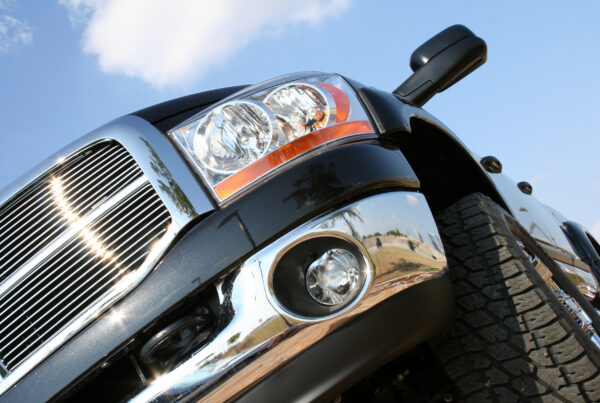The collaboration between Moreland City Council and H2U – the hydrogen utility™ to move to a zero emissions fleet is gathering significant momentum.
Key steps to implement change across the council are well in place to ensure they are on track to lower net carbon emissions by 22 per cent across the community by 2020. A report labelled Zero Carbon Evolution found “reduction of this scale would see the municipality living within its ‘carbon budget’ and on track to zero carbon”.
“It will also deliver more local renewable energy for Moreland homes and businesses, homes that are more comfortable and consume less energy, resource-smart businesses, more opportunities for people to be active and increased vegetation and urban greenery,” it said.
At its core, Moreland’s Zero Emissions target aims to acknowledge the devastating environmental and social impact of fossil fuels on local communities and the natural world. Furthermore it seeks to identify the need and overall responsibility for businesses to reduce emission from their fleet operations.
In order to move forward, Moreland had to look back to past trends of emissions usage across the stage. In its findings it found that per-capita Victoria was one of the highest greenhouse gas emitters in the world.
The Moreland community alone emitted approximately 1491 kilotonnes (kT) of greenhouse gases in 2011, with almost half coming from electricity in households and businesses, while transport for fleets and other vehicles representing 34 per cent of total emissions.

Emissions recorded by the Moreland City Council in 2011
Recommendations from the Victorian Commission into Environmental Sustainability found that significant reform must occur now to protect the environment for the future generations to enjoy.
“The opportunities to reduce greenhouse gas emissions and limit the severity of climate change are rapidly diminishing. Strong action has to occur now if the risks and their associated costs are to be avoided”
Victorian Commissioner for Environmental Sustainability, 2013
From a internal review into its own fleet, Moreland found that 18 of its 300+ vehicle fleet were responsible for over 50% of its total emissions.
Council waste collection vehicles were deemed the biggest culprits, largely due to the stop/start nature that comes with collecting residential and business rubbish on a daily basis.
What a zero emissions future would look like for fleet
In light of these findings, electric drivetrains and hydrogen fuel cells powered by renewable energy sources are beginning to come into play for the council.
Following on from an electric vehicle fleet study conducted in 2014, the council expanded their battery powered fleet and developed a network of 11 public charging stations.
The study found that while battery-electric vehicles represent a key technology for small passenger and light commercial vehicles, more work was required to utilise this for heavier fleet such as council waste collection vehicles.

One of 11 electric charging stations that Moreland has installed in recent years
As a result, Moreland has partnered with H2U – the hydrogen utility™ to develop hydrogen fuel cells that can power their vehicles in place of high-emitting diesel vehicles. The economics suggest that over the long term hydrogen for heavy fleet can ultimately be comparative to standard diesel prices that hover around the $1.5/L benchmark.
Already a hydrogen refuelling station plant has been planned for installation in Hadfield that would see up to 3 Hi-Flo dual 35/70 MPa dispensers developed, along with a public dispensing area that would be used to encourage external fleet vehicles and councils to consider a move to hydrogen. A 250m squared indoor and outdoor display section is also in the pipeline to promote education and innovation to the broader public.
Founder and CEO of the team Dr Attilio Pigneri, said the team was proud to be working alongside Moreland on the project.
“We are truly inspired by the knowledge, foresight, enthusiasm and can-do attitude we have encountered at Moreland,” said Dr Pigneri.
“Council’s energy is infectious and their standing as an environmental leader has many councils across Australia eager to follow in Moreland’s footsteps.”
5 key advantages of a hydrogen fuel cell system
In its research H2U has found five potential advancements that using a HFC system would allow:
- Improved Torque – Superior torque delivery using electric traction motor (typically no transmission required);
- Reduced Weight – Vehicle tare weight can be matched or reduced using FCEV technology whilst maintaining the same duty cycle as an internal combustion engine (ICE)
- Comparative Range – Similar or above ICE, without payload compromises
- Fast Refuel Rates – Refuelling time can be similar to ICE (maintaining similar refuelling downtime)
- Lower Noise – Operational noise can reduce by up to 70% (particularly when compared with heavy diesel ICE)
The video below documents how a hydrogen filling station would work using an IC90 compressor.
Where to now?
Moreland Mayor Cr Helen Davidson said a project of this kind aims to revolutionise how councils across the globe operate, particularly in the waste collection sector.
“With the prototype truck to be built locally, Council can continue its transition away from fossil diesel fuel and toward renewable hydrogen for all our heavy fleet vehicles.
“Moreland has always been a recognised leader when it comes to sustainability initiatives and this world first project will take us closer to achieving our zero emissions goal,” Cr Davidson said.
Formal planning of the project is already in advanced stages with for all partners now awaiting the outcome of State and Federal Government funding submissions.
“Everyone in Moreland is responsible for climate change, everyone is vulnerable to the impacts, and everyone must be part of the solution.”
Zero Carbon Evolution Report, June 2014
More info available here: Zero Carbon Evolution Report and Electric Vehicle Fleet Feasibility Study




















